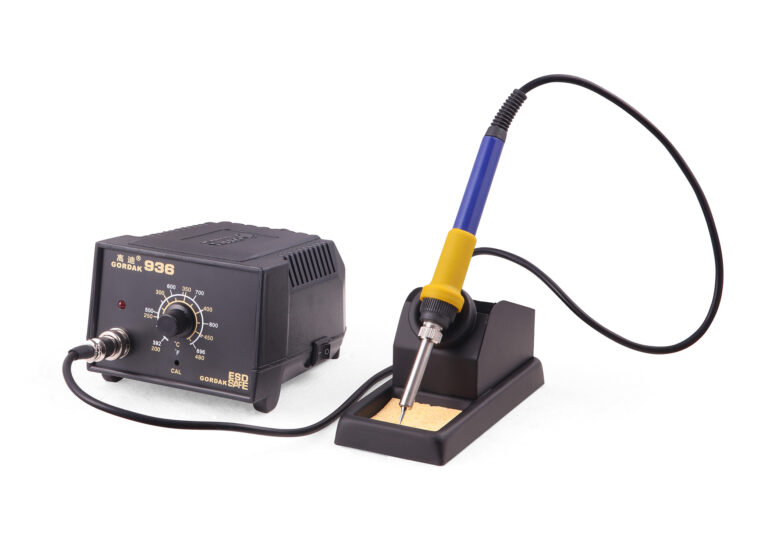The need for soldering stations increased significantly as many hardware start-ups were established around the region.
Although a cheap unregulated 230V 25-Watt iron which connects straight into the mains and heats up to uncontrollably high temperatures can be used to complete your task.
If you are into real career work, cheap soldering irons and stations won’t last for long, and you will regret getting one.
You require a thorough step-by-step guideline that specifies the most recent soldering station on the market if you want to avoid purchasing problems.
Specifications and features of a good soldering station power supply
The characteristics and functions of the soldering station are the most important information you should be knowledgeable of before making a purchase. These are covered individually below:
1. Analog/Digital soldering stations
All soldering stations regardless of it being analog or digital have a base unit whereby a soldering iron is coupled. The control circuit card and user interface make up the base unit.
The analog station just has an LED light and an adjustable knob, whereas the digital station’s LED display shows the set and operating temperatures. The digital form is more refined but costly as opposed to analog soldering stations.
Wattage:
A crucial factor to consider is the wattage of soldering stations. The size of the components and the kind of PCB has a major impact on the wattage rating.
Heat is absorbed and dissipated more readily by larger components, heatsinks, and pads on power planes. The junction would start cooling down and get dry if the soldering station couldn’t supply the necessary amount of electrical power.
A 50-Watt soldering station will do the job if your design comprises ICs and smaller components.
Consider purchasing a 100-Watt soldering station, however, if there are components like sizable heatsinks and copper wires.

2. Temperature accuracy
It is the difference between the temperature at the tip of the soldering iron and the temperature you specified at the soldering station.
To save money, designers will occasionally reduce temperature accuracy. Temperature accuracy is also affected by component tolerance.
In summary, an ideal station’s temperature accuracy ought to be within +/-5 degrees Celsius.
3. Temperature consistency
This standard shows us how effectively the control card circuit really works, accounting for heat losses into the environment while regulating the tip temperature of the soldering iron closest to the specified temperature.
This standard is only applicable when the iron is not used for soldering. A range of +/-1OC is sufficient.
4. Input voltage:
The input voltage of soldering stations is a vital parameter to consider; else, you may probably end up purchasing a station that is unsuitable with the power from the wall socket.
5. Thermal recuperation:
Thermal recuperation is the rate at which the iron tip returns to the fixed temperature.
This criterion is not included in the soldering station’s manual, and to obtain a general notion of thermal recovery, check the rated power of the soldering station. The higher the soldering station’s power rating (in watts), the quicker it will recuperate thermally.
Procure high-quality soldering stations from us
To acquire the best bargains, it is critical to be well-versed in all aspects of the soldering station power supply and its standard requirements.
We provide the finest soldering station power supply together with superb after-sales service. Kindly click here to acquire the best soldering station for your needs.



